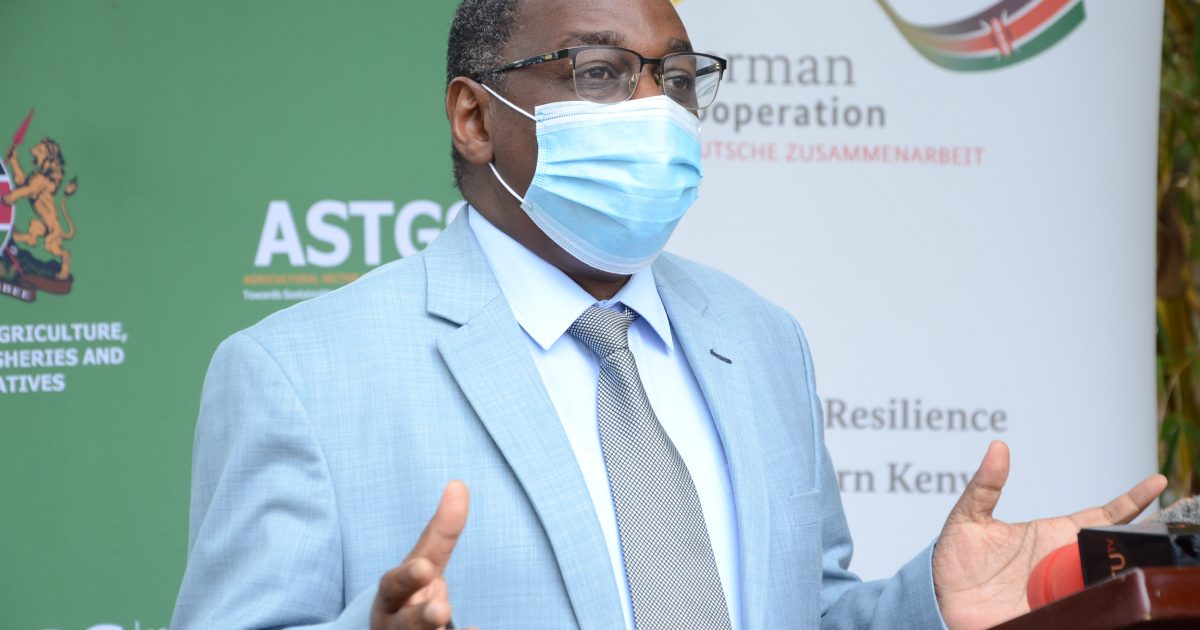The government through agriculture research institutions in the country is introducing high yielding, high nutrition and more resilient root and tuber crops in a move aimed at shoring up food security in the Arid and Semi-Arid Lands (ASAL’s)
State Department of Crops Development and Agricultural Research Principal Secretary (PS) Professor Hamadi Iddi Boga said that in history our communities have been surviving on root and tuber crops like arrow roots, cassava and yams but we abandoned them –and called them orphan crops- in favour of imported exotic varieties likes maize and Irish potatoes.
“If we factor in the issue of resilience and climate change -and considering that starch is starch no matter whether it comes from maize or cassava- there is a possibility of these crops coming back since there is no point growing maize in ASAL areas as it needs a lot of water while we have these crops which are drought resistant,” said Prof. Boga.
He said that the government is fully supporting agriculture research institutions in the country and they have applied for a grant of Sh. 655 million (five million euros) from the International Fund for Agricultural Development (IFAD) to support these value chains and they are at the stage where they are signing with The Treasury and IFAD.
“On matters agriculture research, we are still below what is recommended in the Science Technology and Innovation (STI) policy which is two percent but the Kenya Agricultural and Livestock Research Organization (KALRO) researchers have developed quite a number of high yield varieties like the Shangi potato is our own product and I think they are developing another Shangi which can last longer since the current one sprouts after two to three weeks,” said Prof. Boga.
Prof. Boga explained that under strict supervision from the Kenya Plant Health Inspectorate Service (KEPHIS), the country is importing clean potato seeds from Netherlands and they are pushing for the importation of tissue cultured plantlets for seed multiplication in the country adding that the Netherlands has over 43 high yield varieties which are good for our local farmers.
“The source of clean seed is a major problem among these crops for instance, cassava is passed around between farmers which spreads diseases especially the maize streak virus and the maize mosaic virus which deforms the cassava and loses value and even eating it is a problem,” said Prof. Boga.
He added that lack of clean seed poses a challenge and an opportunity at the same time since research institutions like KALRO and other investors can venture into these and create opportunities by brining solutions not only in the seeds but also in processing where there are options like flour blending, fermentation, product diversification which including making cassava crisps, ethanol among other products.
Speaking at the KALRO headquarters on Thursday during a roots and tuber crops development strategy forum convened by Self Help Africa supported by the European Union, Prof. Boga said that KALRO has also come up with high yield cassava varieties which are free from pests, are not bitter and have more starch and if they work with other investors they will be able to multiply the seeds.
The PS explained that the problem with root and tuber crops like cassava, yams, sweet potatoes and arrow roots is the lack of market since we produce too much and the farmers do not have storage capacity.
“We haven’t mechanized our agriculture so we don’t have good post-harvest handling facilities, considering that the roots and tuber crops are very bulky and hard to move around, we need to be better organized,” he said.
The PS highlighted that the government has been pushing for a blending policy where for instance we can have flour made of cassava and maize or arrow roots and maize so that we can offtake these products from farmers which will create a market for the root and tuber crops.
“This will assure us of food and nutrition security since cassava is a fantastic crop especially for coastal counties, some of the ASAL counties as well as the Western counties,” said the PS.
Prof. Boga said that the blending policy was passed but there is need for the government to sit with the millers and give them some incentives because what the millers have are the traditional mono (single) products systems and to blend they will need another production line.
“It is a business and we cannot force them, probably we need to guarantee them of the market until people are familiar with some of these products,” said the PS.
Kilifi County Executive Committee Member (CECM) in charge of agriculture, livestock and fisheries development Ms. Liciana Jumwa Sanzua said that the cassava value chain plays a very important economic role in the county and they boast as being the highest producer of the crop in the country.
Ms. Sanzua said that they produce over 900 million metric tons of cassava annually and with a population of 1.4 million people they cannot consume all the produce with lack of market being a major challenge for the farmers.
“We have had challenges from the over-production of cassava since it is bulky and highly perishable and when harvested it cannot stay for over three days on the shelves and the challenge has been getting sustainable market linkages,” she explained.
Ms. Sanzua said Kilifi has put up a processing factory which is yet to begin operation but the equipment is already in place adding that they have been approached by processing companies with an interest in processing cassava into flour meal, cassava chips, starch, and ethanol among others.
“Unfortunately cassava doesn’t fetch a good price at the market and farmers are being offered Sh.3 per kilogram at farm gate and we have been advocating for between Sh5 to Sh.8 for the farmers to break-even but the bulky nature of cassava limits its transportation making it hard to market it in distant places,” she said.
by Joseph Ng’ang’a




